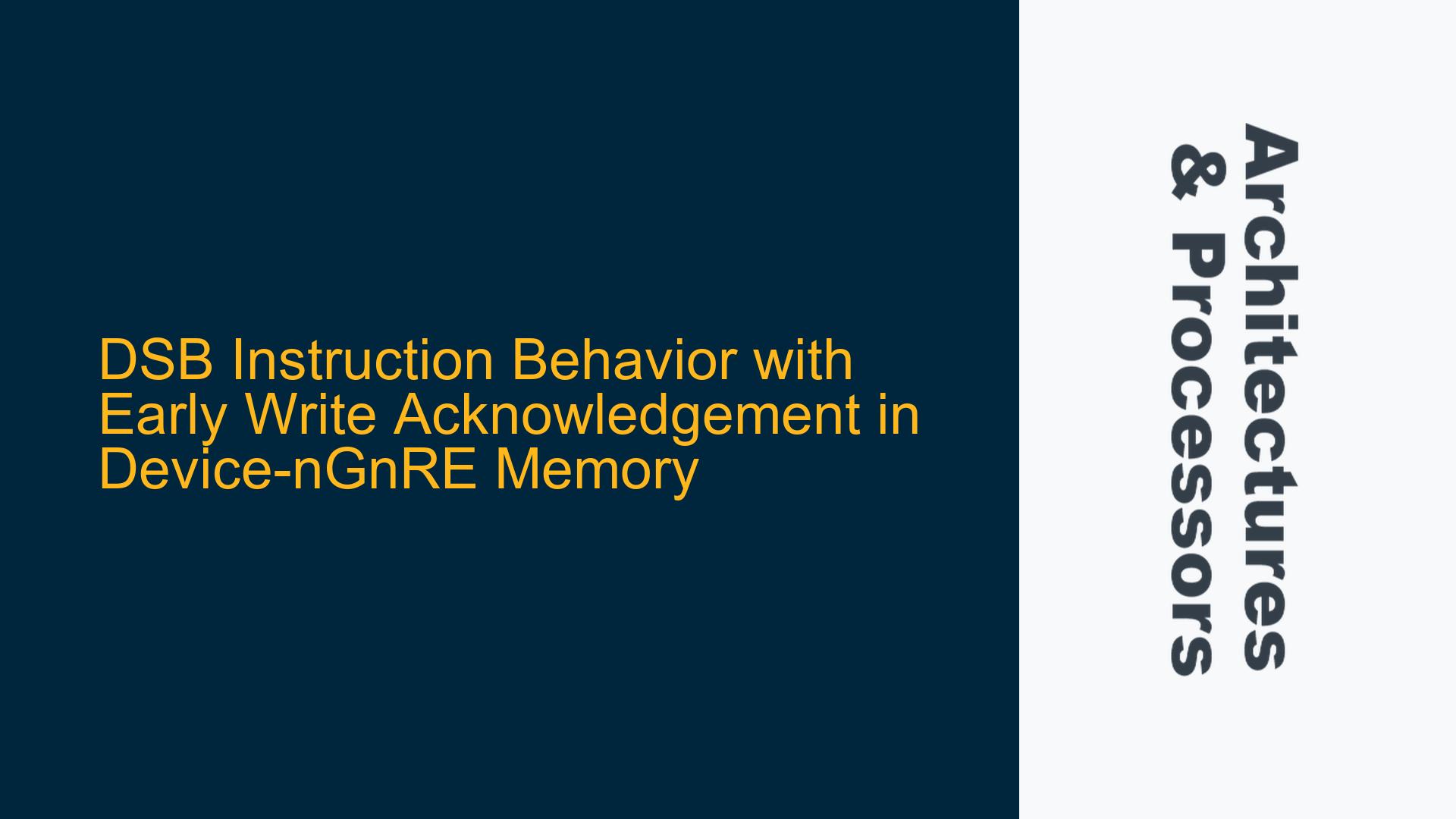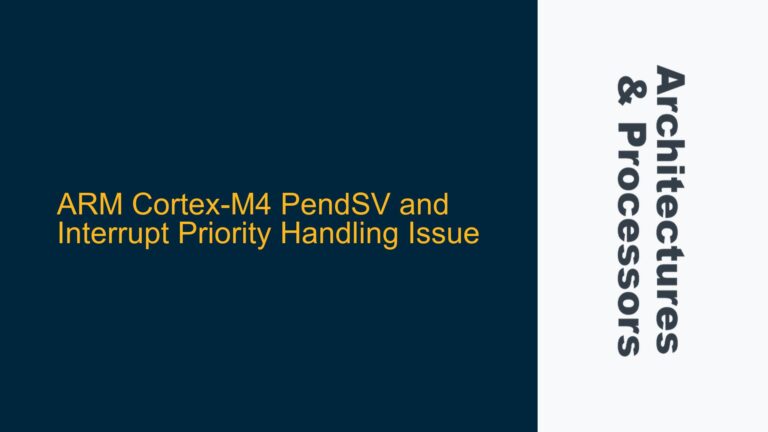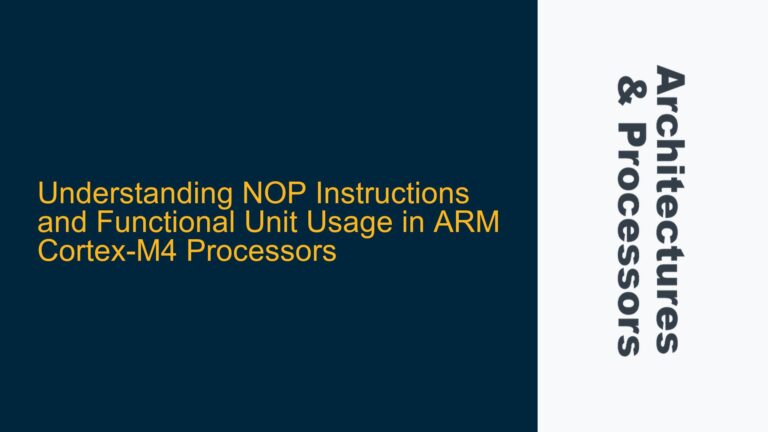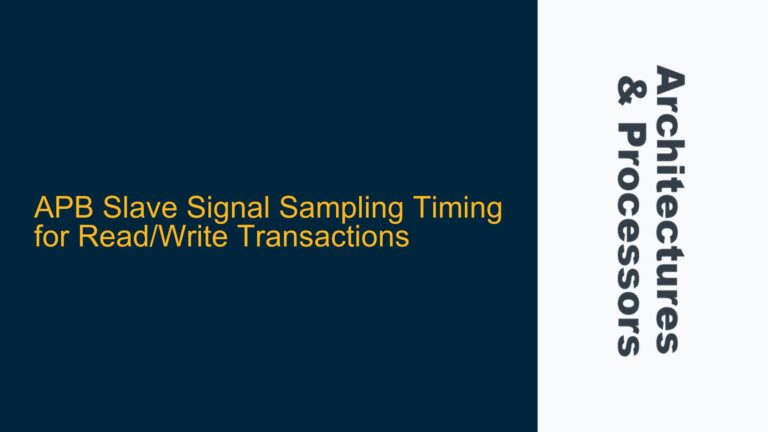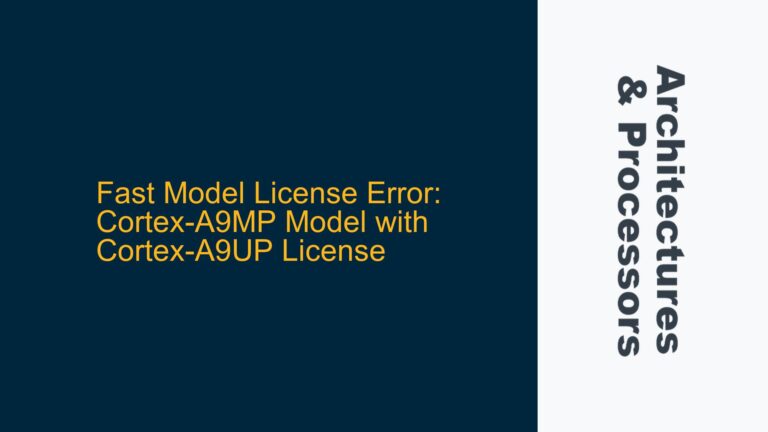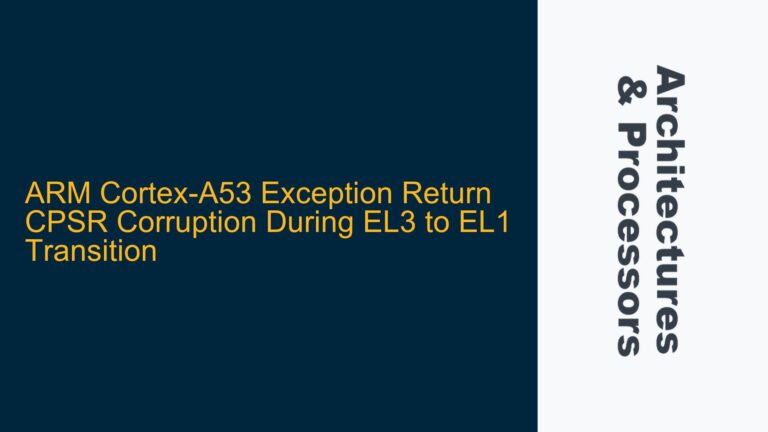DSB Completion Before Write Reaches Endpoint in Device-nGnRE Memory
The behavior of the Data Synchronization Barrier (DSB) instruction in ARM architectures, particularly when dealing with Device-nGnRE memory types, is a nuanced topic that requires a deep understanding of memory attributes, write acknowledgements, and the ARM memory model. Device-nGnRE memory, which stands for Device-non-Gathering, non-Reordering, and Early Write Acknowledgement, is a memory type that allows the memory system to acknowledge a write operation before the write has actually reached its final destination. This early write acknowledgement can lead to scenarios where the DSB instruction completes before the write has fully propagated through the memory hierarchy, potentially causing confusion and subtle bugs in software that relies on strict memory ordering.
In ARM architectures, the DSB instruction is used to ensure that all memory accesses before the DSB are completed before any memory accesses after the DSB can begin. This is crucial for ensuring correct operation in multi-core systems, where different cores may be accessing shared memory, and in systems with DMA (Direct Memory Access) engines that operate independently of the CPU. However, when dealing with Device-nGnRE memory, the early write acknowledgement feature complicates this picture. The memory system can signal that a write has been accepted and completed from the perspective of the CPU, even though the write has not yet reached its final destination in the device memory. This means that the DSB instruction, which is supposed to ensure that all previous memory accesses are complete, may actually complete before the write has fully propagated through the memory system.
This behavior is particularly relevant in scenarios where software writes to multiple device memory locations in sequence, without any DSB instructions in between. In such cases, the processor may place these writes into a store buffer and continue executing subsequent instructions, without waiting for the writes to actually reach their destination. This can lead to situations where the order of writes is not preserved, or where subsequent reads from the device memory return stale data, because the writes have not yet been fully processed by the memory system.
Memory Barrier Omission and Store Buffer Behavior in Device-nGnRE Memory
The root cause of the issue lies in the interaction between the ARM memory model, the behavior of the store buffer, and the early write acknowledgement feature of Device-nGnRE memory. The ARM memory model allows for a high degree of flexibility in how memory operations are performed, including the ability to reorder certain types of memory accesses for performance reasons. However, this flexibility comes at the cost of increased complexity in ensuring correct memory ordering, particularly when dealing with device memory.
In the case of Device-nGnRE memory, the early write acknowledgement feature allows the memory system to signal that a write has been completed from the perspective of the CPU, even though the write has not yet reached its final destination. This can lead to situations where the DSB instruction, which is supposed to ensure that all previous memory accesses are complete, may actually complete before the write has fully propagated through the memory system. This is because the DSB instruction only waits for the memory system to acknowledge that the write has been accepted, not that it has been fully processed.
The store buffer plays a crucial role in this behavior. When a write to Device-nGnRE memory is performed, the processor places the write into the store buffer and signals that the write has been completed from the perspective of the CPU. The store buffer then handles the actual transmission of the write to the memory system, which may take some time to complete. However, because the memory system has already acknowledged the write, the DSB instruction can complete before the write has actually reached its destination.
This behavior is further complicated by the fact that the store buffer may collect multiple writes before initiating a transaction over the bus. This means that even if a DSB instruction is used to ensure that a particular write has been completed, there is no guarantee that subsequent writes have also been completed. This can lead to situations where the order of writes is not preserved, or where subsequent reads from the device memory return stale data, because the writes have not yet been fully processed by the memory system.
Implementing Data Synchronization Barriers and Cache Management for Device-nGnRE Memory
To address the issues arising from the behavior of the DSB instruction and the store buffer in Device-nGnRE memory, it is necessary to implement a combination of data synchronization barriers and cache management techniques. These techniques ensure that memory accesses are properly ordered and that writes to device memory are fully processed before subsequent operations are performed.
One approach is to use a combination of DSB and DMB (Data Memory Barrier) instructions to enforce strict memory ordering. The DMB instruction ensures that all memory accesses before the DMB are completed before any memory accesses after the DMB can begin. This can be used in conjunction with the DSB instruction to ensure that writes to Device-nGnRE memory are fully processed before subsequent operations are performed. For example, after performing a write to Device-nGnRE memory, a DMB instruction can be used to ensure that the write is fully processed before any subsequent memory accesses are performed. This can help to prevent situations where the order of writes is not preserved, or where subsequent reads from the device memory return stale data.
Another approach is to use cache management techniques to ensure that writes to Device-nGnRE memory are fully processed before subsequent operations are performed. This can be done by using cache maintenance operations, such as cache cleaning and invalidation, to ensure that the contents of the cache are properly synchronized with the contents of the device memory. For example, after performing a write to Device-nGnRE memory, a cache clean operation can be used to ensure that the write is fully processed before any subsequent memory accesses are performed. This can help to prevent situations where the order of writes is not preserved, or where subsequent reads from the device memory return stale data.
In addition to these techniques, it is also important to carefully consider the use of memory barriers and cache management operations in the context of the overall system design. For example, in systems with multiple cores or DMA engines, it may be necessary to use additional synchronization mechanisms, such as spinlocks or semaphores, to ensure that memory accesses are properly ordered and that writes to device memory are fully processed before subsequent operations are performed. This can help to prevent situations where different cores or DMA engines access shared memory in an inconsistent manner, leading to subtle bugs and performance issues.
In conclusion, the behavior of the DSB instruction in ARM architectures, particularly when dealing with Device-nGnRE memory, is a complex and nuanced topic that requires a deep understanding of the ARM memory model, the behavior of the store buffer, and the early write acknowledgement feature of Device-nGnRE memory. By implementing a combination of data synchronization barriers and cache management techniques, it is possible to ensure that memory accesses are properly ordered and that writes to device memory are fully processed before subsequent operations are performed. This can help to prevent subtle bugs and performance issues, and ensure the correct operation of the system as a whole.
